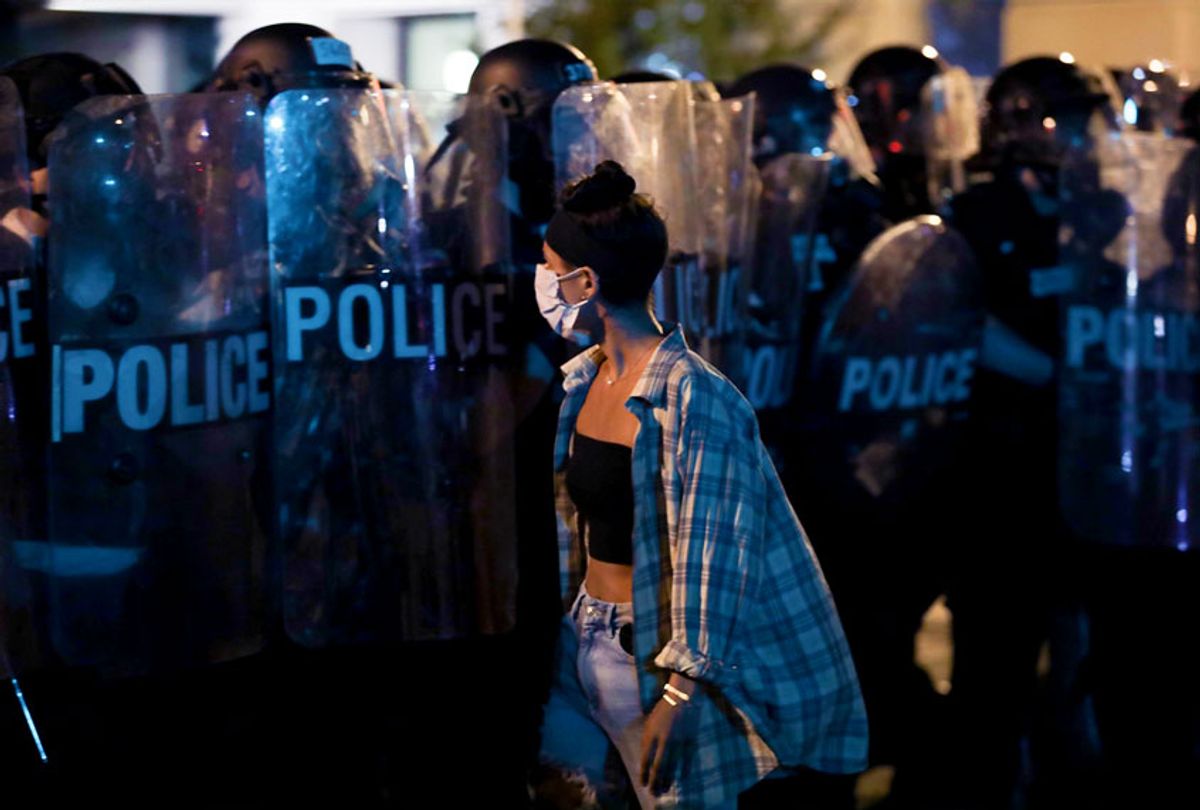The Minneapolis Police Department has used neck restraints at least 237 times since 2015, according to an analysis of police records by NBC News.
Minneapolis officers rendered at least 44 people unconscious with neck restraints during that time, which police experts said was "unusually high." About three-fifths of those rendered unconscious were black. In most cases, there was no apparent underlying violent offense. Half of those who lost unconsciousness were injured.
"Any time you cut off someone's airway or block blood flow to the brain, it can lead to serious injury or death, as we have seen in so many of these tragedies," Ed Obayashi, who trains police departments on use-of-force, told the outlet. "By using this tactic, it's a self-fulfilling tragedy."
The analysis comes after former Minneapolis Police Officer Derek Chauvin was caught on video kneeling on the neck of George Floyd as he lay handcuffed on the ground for more than several minutes, including nearly three minutes after he appeared to stop breathing. Chauvin was charged Friday with third-degree murder and manslaughter in Floyd's death.
More than a dozen police officials and law enforcement experts told NBC News that kneeling on a suspect's neck is "neither taught nor sanctioned by any police agency."
However, the Minneapolis Police Department's policy manual, which is available online, does allow the use of neck restraints to render suspects unconscious, however..
"The unconscious neck restraint shall only be applied . . . 1. On a subject who is exhibiting active aggression, or; 2. For life saving purposes, or; 3. On a subject who is exhibiting active resistance in order to gain control of the subject; and if lesser attempts at control have been or would likely be ineffective," the manual says.
Police data reviewed by NBC News reveals that most of the neck restraints used to render people unconscious came after a suspect attempted to flee or "tensed up" as they were detained.
Obayashi, who trains police departments to stop using neck restraints, said the Minneapolis policy appears "dated" and does not seem to discourage their use.
"The policy doesn't appear to reflect what California and other law enforcement agencies using best practices recognize, which is if officers don't use extreme caution with this force option, the likelihood of serious injury or death rises significantly," he told NBC News. "This seems to be a routine practice by the Minneapolis Police Department. As a cop, the tone is there: 'Use it when you think it's appropriate.'"
Shawn Williams, a former Minneapolis police officer who now works as an assistant professor and professional peace officer coordinator at St. Cloud State University in Minnesota, told the outlet that there is an inherent risk in departments using controversial neck restraints.
"If it's used correctly, you can cause the suspect to render themselves compliant, and we can take someone into custody without damage internally," he said. "If it's not used correctly, and the arm is placed in the wrong place, you're talking about damage to one's trachea. And you're talking about taking someone's life."
Richard Drooyan, who served as counsel on the commission that investigated the Los Angeles Police Department beating of Rodney King and now oversees the Los Angeles County Jail, said the number of neck restraints used by the department was "extraordinary," because they should only be used in rare instances.
"In many cases, the justification was that the suspect tensed up, which I read to mean resisted arrest or fled on foot without any indication that the suspect was armed or dangerous," he said. "You have a combination of a large number of incidents involving the use of neck restraints on individuals who were not engaged in violent criminal activity and appeared to have been restrained because they appeared to be resisting arrest."
The Minnesota Professional Peace Officer Education System said in a statement that the tactics used by Chauvin in the video "do not appear to reflect the training that students receive." The Hennepin County Attorney's complaint said the restrained Chauvin used "with a subject in a prone position is inherently dangerous."
"There hasn't been one person, one police chief, anyone I've talked to, who doesn't see this exactly the same way. The police officer and those who were there that day failed George Floyd," Chuck Wexler, who heads the law enforcement think tank Police Executive Research Forum, told NBC News. "Every police officer that looked at that video who knows anything about tactics shook their head."
Experts pointed to the disparate policies among departments for stoking confusion among officers but argued that was only a part of the problem.
"Part of the problem is the lack of centralized, specific guidance," Seth Stoughton, a use-of-force expert at the University of South Carolina Law School, told NPR. "But I don't think that's the entire problem. I think part of the problem is also a very strong cultural resistance to criticizing other cops."
Walter Katz, a former Chicago public safety official and longtime public defender, said the indifference shown by Chauvin in the video shows that the problem is deeper than policy.
"People were yelling at him as to what he was doing, and he continued to do so. To me that is not a training issue. To me that is a reflection of a culture issue," he told NPR. "If there's a belief that some members of the community deserve less dignity than others, these types of things will keep on happening."



Shares